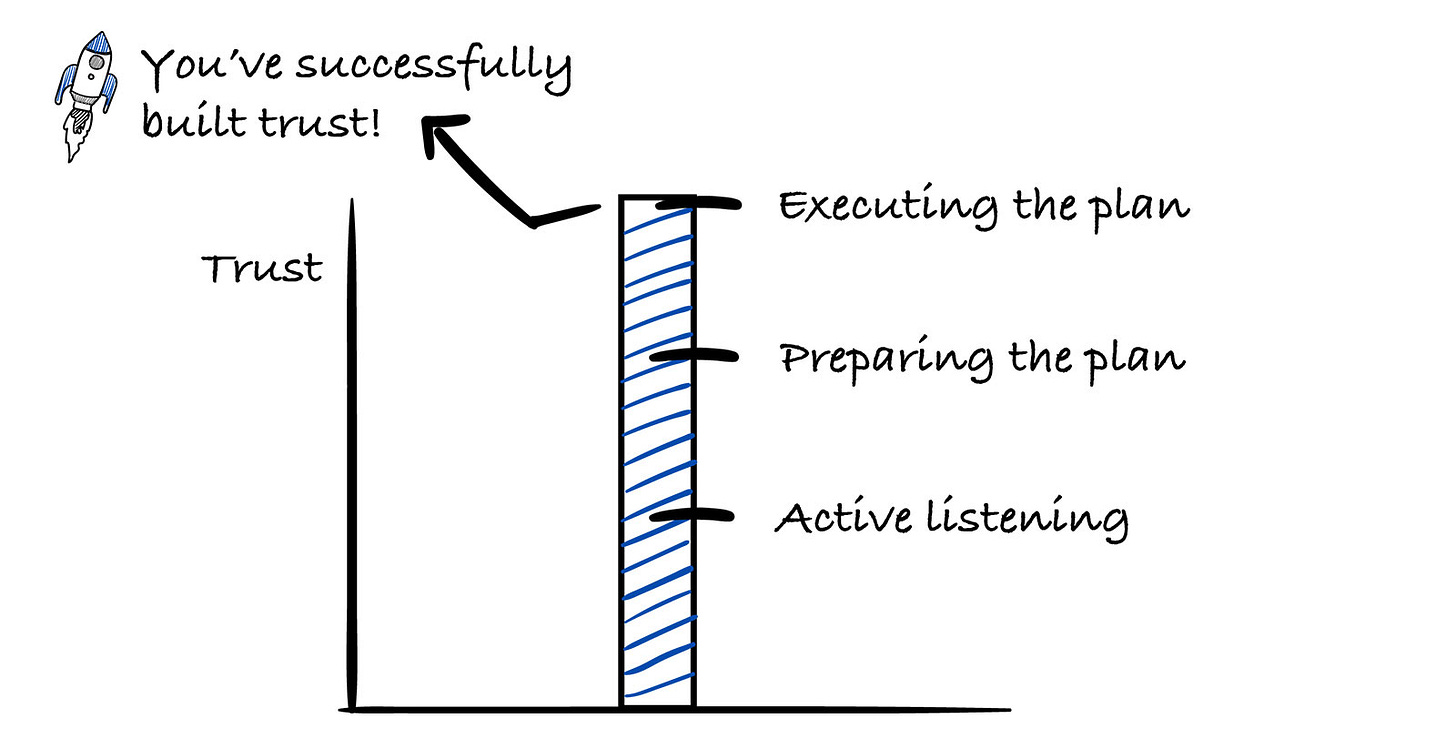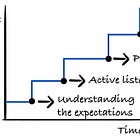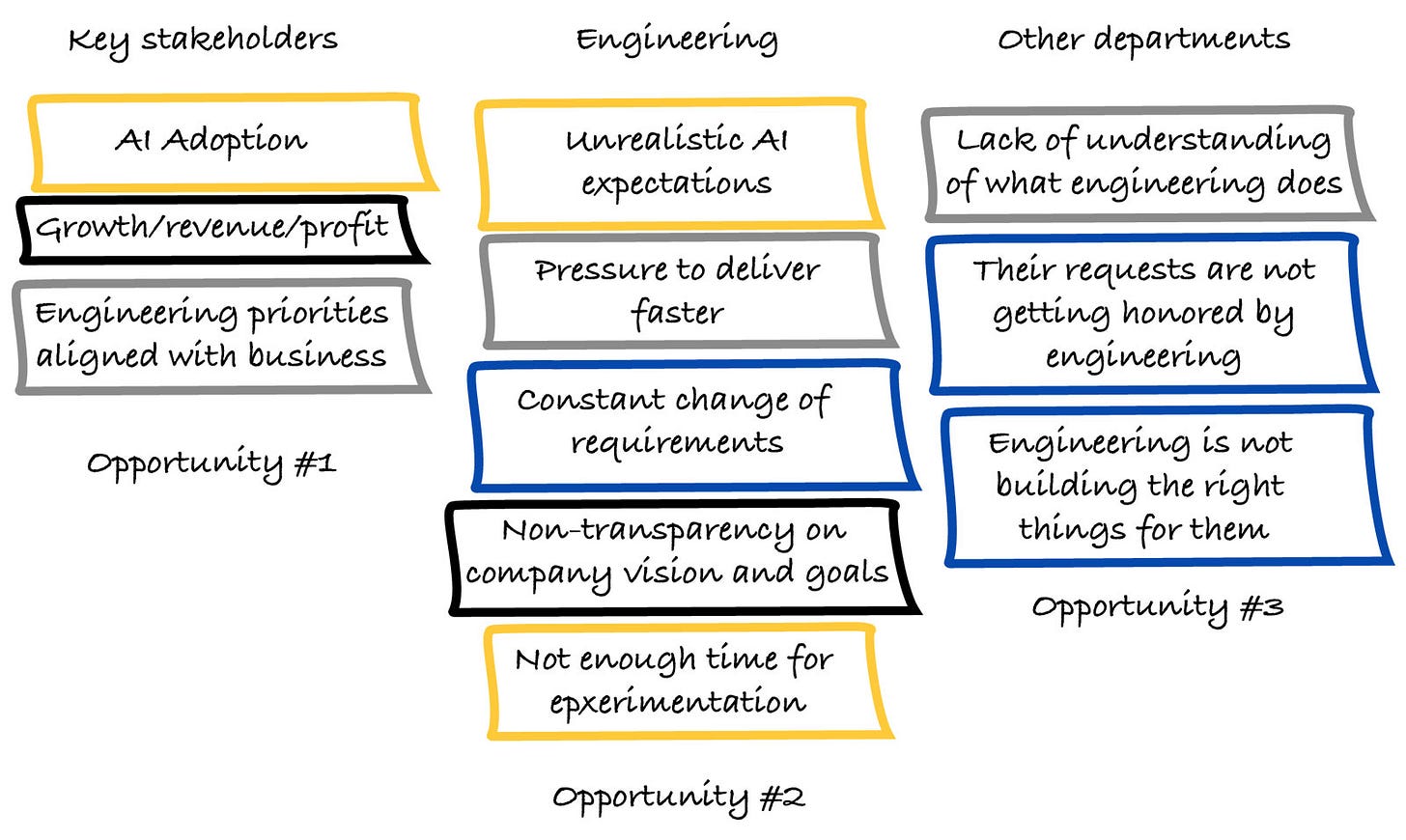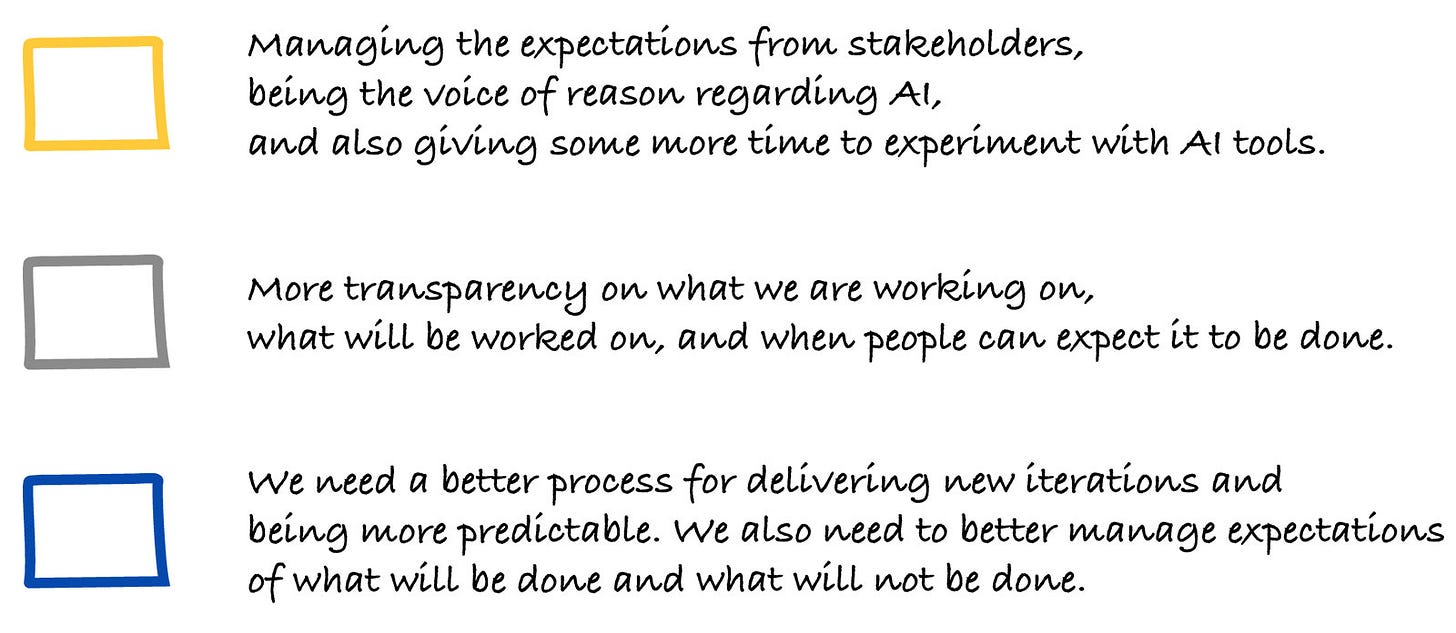How to Build Trust as an Engineering Leader Part 2: Structure and Execute the Plan
You've got the plan down, now it's time to execute it!
Intro
No matter if you’ve been promoted internally or you’re stepping into a new organization, one thing is crucial to understand → as an engineering leader, building trust is everything. It’s the foundation for how you lead, make decisions, and bring people together.
Without it, even the best plans or ideas won’t get far. People follow leaders they trust, not just the ones with the right answers, but the ones who show consistency, empathy, and also transparency + predictability are both important, as we’ll mention later.
That’s why it’s crucial to start building trust from the start. Every conversation, every decision, and every outcome matters.
The way you listen, communicate, and deliver on what you say will define how others see you. Get that right early, and you’ll set yourself and your team up for long-term success.
This is an article for paid subscribers, and here is the full index:
- Recap of Part 1
- Based on Your Findings, These are the Biggest Concerns Across the Company
- Visual Presentation of Findings and Mapping Them Together
- You’ve Identified The 3 Most Impactful Things to Address
🔒 This is How to Approach Addressing these Challenges
🔒 1. Addressing the Unrealistic AI Expectations
🔒 2. Transparency on What We Are Working On as an Engineering Org
🔒 3. Better Process That Includes Transparency And Predictability
🔒 Spotting the Issues and Finding the Right Solutions is Going to Build Immense Trust
🔒 Last words
Let’s first start with a quick recap of Part 1!
Recap of Part 1
If you haven’t read part 1 yet, you can do it here:
A quick TLDR:
We defined how important trust is in your role as an engineering leader and what could happen if you start making decisions without building a good understanding first.
We then went over how to start building trust both upwards and downwards.
The first important thing is to understand the expectations thoroughly → it may be the reason between you being successful in the role or not.
After that, organize 1:1 meetings with the people that you work with and note down all the insights. We noted down the 3 main questions you should ask each person.
It’s important that you can visualize your findings in a quick way and also present them as well. I personally use Miro for that. You can see an example of how it looks in the article.
Then the next step is to present your findings to the relevant people, present your plan, and reach a consensus.
We left off with involving the team and starting to execute the plan, and this is what we’re going to focus on in this article.
Before we jump into pure execution of the plan, it’s important to go through a bit of the mindset on how to structure and prioritize + how to find the most impactful things to work on that would build trust and also solve the most problems for the company.
Based on Your Findings, These are the Biggest Concerns Across the Company
You understand the situation better now, you’ve been through the most important meetings, and you’ve had 1:1 discussions with all the relevant people. Based on that, these are the concerns that you have come across.
Based on your discussions with the key stakeholders in the company, you saw that their biggest concerns are:
AI adoption across the company and missing out on the potential productivity increase from it.
Growth in revenue/profit in general, achieving a higher % of market share, and decreasing churn.
Ensuring that engineering priorities are aligned with business goals
Based on your discussions with engineers and other engineering leaders across the company, some of the biggest concerns they have are:
The unrealistic expectations about AI from company leaders provide stress in their work.
The pressure to deliver features faster with constantly changing requirements leads to burnout and technical debt.
Not understanding the company vision and priorities, especially around how AI initiatives fit into day-to-day engineering goals and timelines.
Limited opportunities for learning and experimentation, making it hard for engineers to safely explore AI tools and approaches before they’re expected to deliver results.
Based on your discussions with other people around the company, you noticed that
There is a lack of understanding of what engineering actually does, and the expectations are not aligned.
The requests from other departments are not getting honored and implemented.
A stronger feedback loop is needed as things get implemented without seeking whether they are actually what they need.
Visual Presentation of Findings and Mapping Them Together
Here is the visual presentation of all of the findings that you’ve got based on talking with many people across the organization.
These are also some of the most common problems I am seeing across the organizations doing consulting and advising at this time.
And what I like to do is → map together what may be connected and what particular problems can be solved together.
As you can see from above, we have mapped together:
Yellow color → There is a disconnect between expectations from leaders and hands-on people doing the work, and also one of the connected issues is the lack of time for experimentation, which you need a lot more of if you’re trying to integrate AI in the process.
Gray color → There is a clear transparency issue with what is being worked on and what is going to be done within a particular timeframe.
Blue color → Problems with planning and the overall process of getting requirements, prioritizing them, and working on them. Most likely, they get lost as well.
Black color → These are one-off problems. All of the companies are looking to increase growth/revenue/profit, so that’s going to be something we will continuously look to improve. And yes, this is very important even for engineering leaders. At the end of the day, there is no engineering without a successful business.
Non-transparency on company vision and goals is something we can solve by being more vocal and sharing what’s important for the business. That can be internal engineering org meetings or overall all-hands meetings → need to share business goals, vision, and challenges.
You’ve Identified The 3 Most Impactful Things to Address
Based on the findings and mapping them together, here are the 3 most impactful things to address:
1. (Yellow) Managing the expectations from stakeholders, being the voice of reason regarding AI, and also giving some more time to experiment with AI tools.
2. (Gray) We need more transparency on what we are working on, what will be worked on, and when people can expect it to be done.
3. (Blue) We need a better process for delivering new iterations and being more predictable. We also need to better manage expectations of what will be done and what will not be done.
So, now we know exactly what is pressing the most for the key stakeholders, the engineering org, and also other departments. Now it’s time to get to work!





